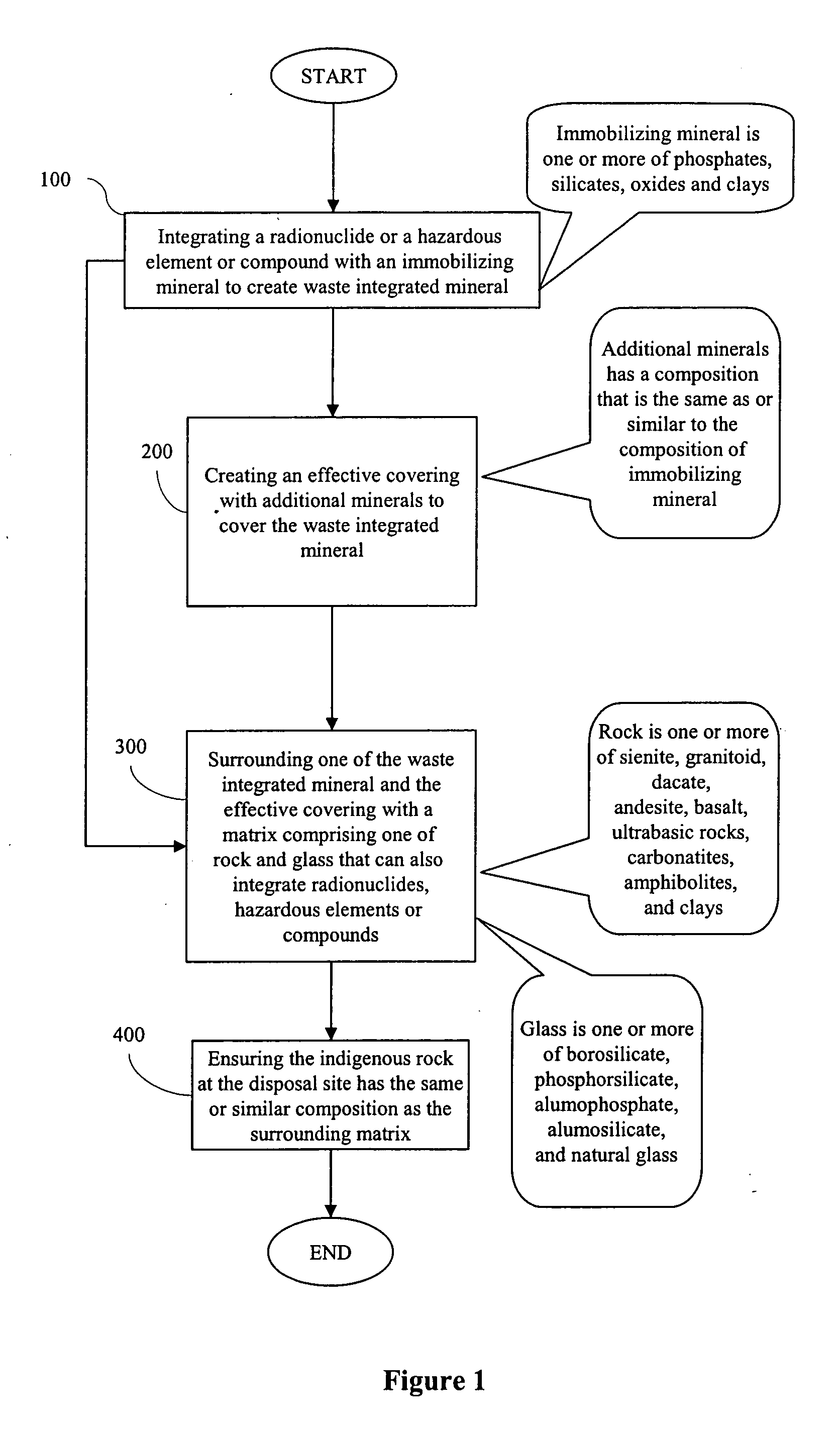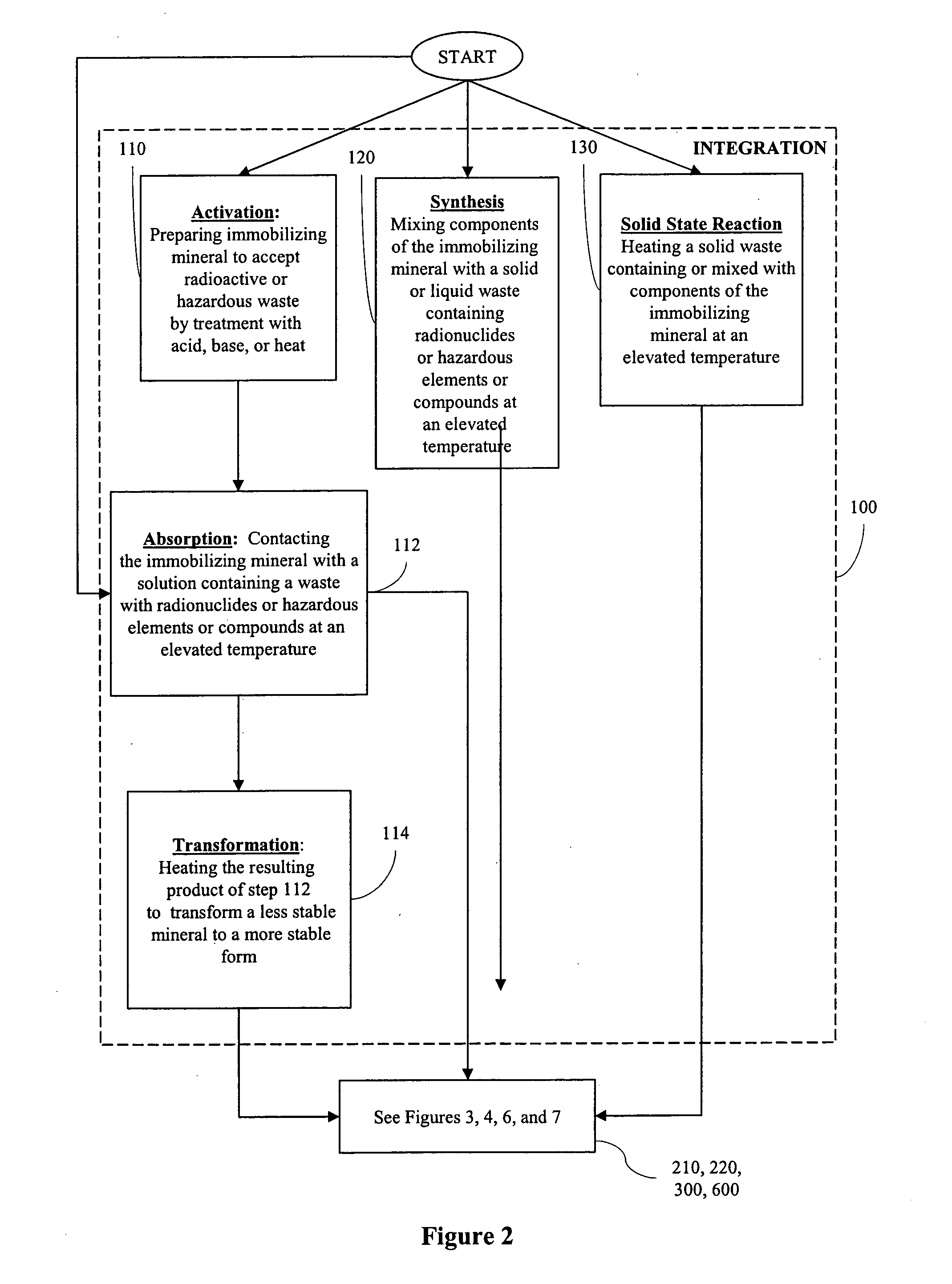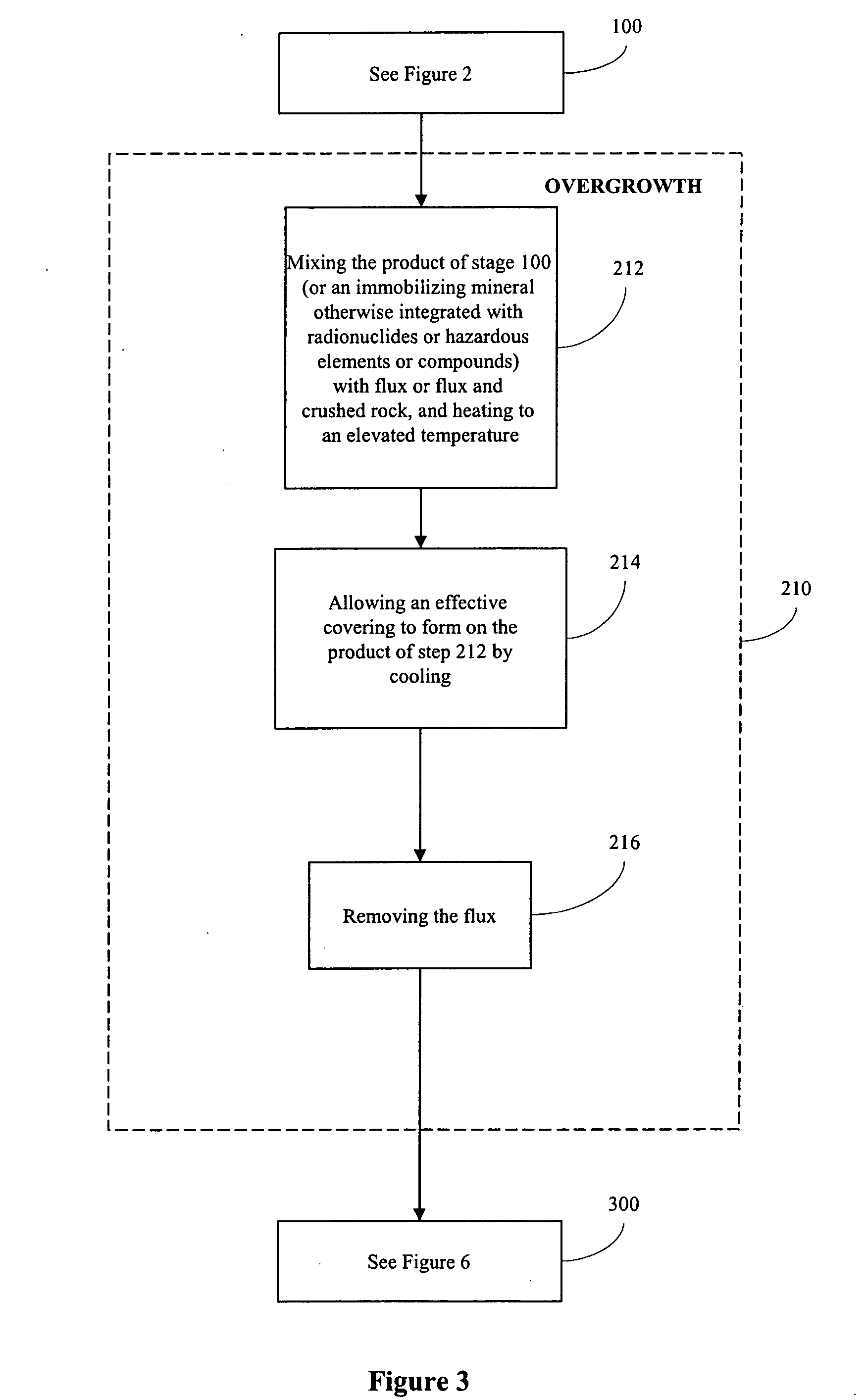Processes for immobilizing radioactive and hazardous wastes
a radioactive and hazardous waste technology, applied in the direction of sustainable waste treatment, nuclear elements, furnaces, etc., can solve the problems of radionuclides, hazardous elements, hazardous compounds, etc., and achieve the effects of reducing the loading of waste oxide in the vitrification process, and increasing the loading of waste oxid
- Summary
- Abstract
- Description
- Claims
- Application Information
AI Technical Summary
Benefits of technology
Problems solved by technology
Method used
Image
Examples
example 1
Method for Immobilizing Liquid Form Waste in Natural Minerals
[0130] 1. Activation A natural calcium-zeolite was crushed and heated to about 400° C. for about 12 hours to remove volatile components.
[0131] 2. Absorption Thorium nitrate crystalline hydrate was dissolved in water resulting in an aqueous solution containing thorium. This solution was then stirred with the calcium-zeolite crystals (the crystals had a particle size of less than 300 microns) at room temperature and then dried in a furnace at 110° C. for about two hours.
[0132] 3. Transformation The resulting crystals were then heated for about 12 hours at about 800° C. resulting in the calcium-zeolite being transformed into feldspar containing thorium. The heating was done at the atmospheric pressure in a furnace.
[0133] 4. Overgrowth+Glass Matrix The result was mixed with crushed obsidian and heated at about 1200° C. for several hours and then cooled by gradual decrease in temperature for up to 48 hours until reaching 60...
example 2
Method for Immobilizing Solid Form Waste in Synthesized Minerals
[0137] 1. Synthesis Ce2O3 and NaPO3 and La2O3 (the components of monazite) were taken and about 10% to 15% by weight of the cerium and lanthanum were replaced by uranium and thorium. This was done by heating all of these components together at 1200° C. for about two days at the atmospheric pressure using a furnace. The result was synthesized monazite in which part of the cerium and lanthanum were replaced by uranium and thorium. The synthesized monazite was then quenched outside the furnace.
[0138] 2. Overgrowth with addition of flux The synthesized monazite was then mixed with Na2B4O7.10H2O containing Ce2O3+P2O5. This was then heated at 900° C. for about two days at the atmospheric pressure in the furnace. This was then cooled to room temperature for eight hours by turning off the furnace. This resulted in an overgrowth of the immobilizing mineral. Next, the Na2B4O7.10H2O was dissolved in boiling water, leaving monazi...
example 3
Method for Immobilizing Solid Form Waste in Synthesized Minerals
[0140] 1. Synthesis The synthesis procedure of Example 2 was used.
[0141] 2. Sintering The synthesized monazite containing the uranium and thorium was mixed with natural monazite of the same composition but without uranium and thorium. About 25% by weight of the synthesized monazite was mixed with 75% by weight of the natural monazite using a mortar by hand. This mixture was heated to about 900° C. to 1000° C. at atmospheric pressure in a furnace for about one day and then was cooled by gradual decrease of temperature to room temperature for eight hours. This results in a conglomerate comprising monazite crystals containing uranium and thorium surrounded by monazite crystals without uranium and thorium.
[0142] 3. Sintering a second time Some uranium and thorium crystals may remained on the surface. Approximately 10% by volume of crushed monazite was then added to the conglomerate of crystals and heated to about 900° C....
PUM
| Property | Measurement | Unit |
|---|---|---|
| weight % | aaaaa | aaaaa |
| thickness | aaaaa | aaaaa |
| thickness | aaaaa | aaaaa |
Abstract
Description
Claims
Application Information
 Login to View More
Login to View More - R&D
- Intellectual Property
- Life Sciences
- Materials
- Tech Scout
- Unparalleled Data Quality
- Higher Quality Content
- 60% Fewer Hallucinations
Browse by: Latest US Patents, China's latest patents, Technical Efficacy Thesaurus, Application Domain, Technology Topic, Popular Technical Reports.
© 2025 PatSnap. All rights reserved.Legal|Privacy policy|Modern Slavery Act Transparency Statement|Sitemap|About US| Contact US: help@patsnap.com



